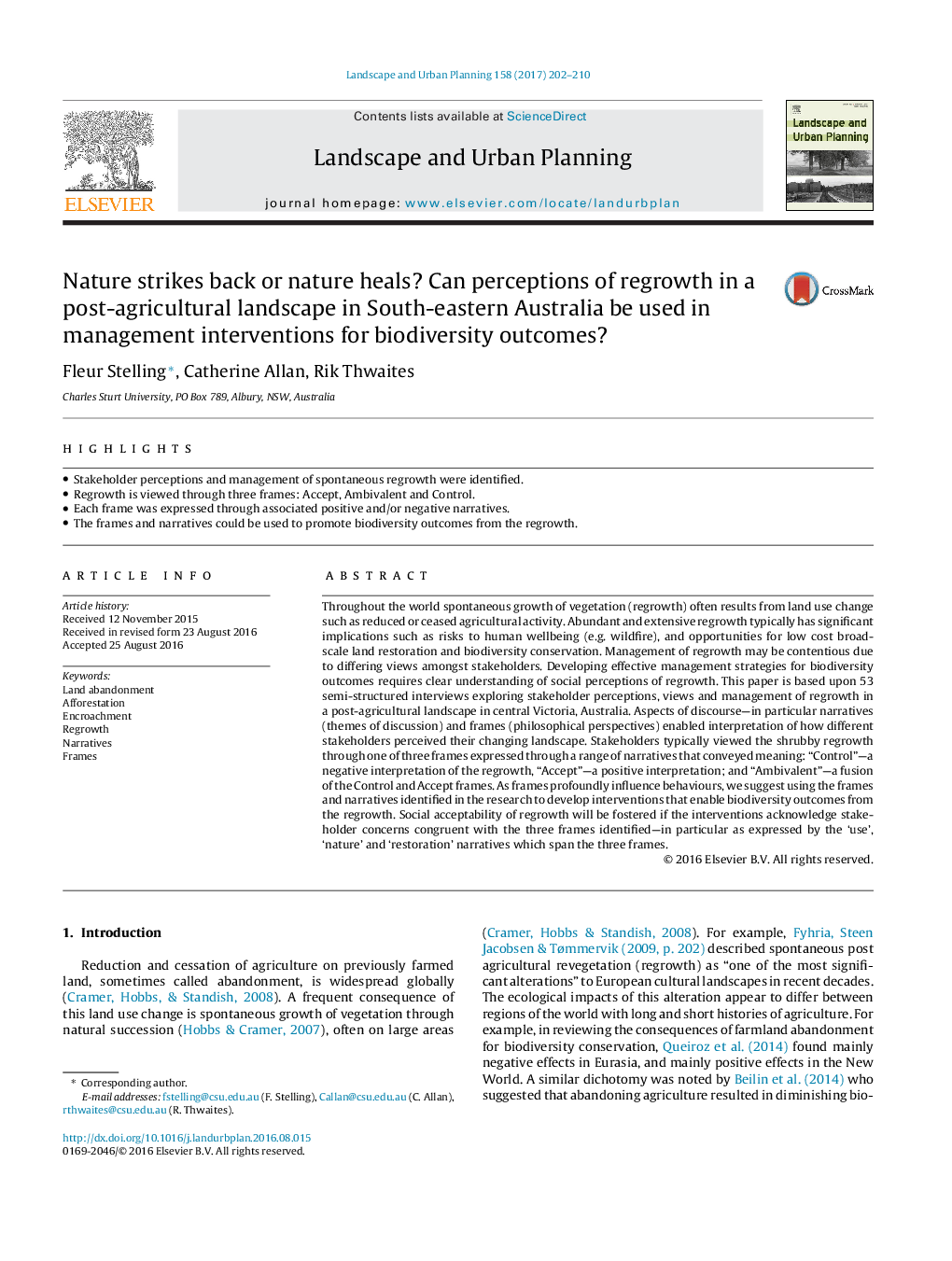| Article ID | Journal | Published Year | Pages | File Type |
|---|---|---|---|---|
| 5115124 | Landscape and Urban Planning | 2017 | 9 Pages |
Abstract
Throughout the world spontaneous growth of vegetation (regrowth) often results from land use change such as reduced or ceased agricultural activity. Abundant and extensive regrowth typically has significant implications such as risks to human wellbeing (e.g. wildfire), and opportunities for low cost broad-scale land restoration and biodiversity conservation. Management of regrowth may be contentious due to differing views amongst stakeholders. Developing effective management strategies for biodiversity outcomes requires clear understanding of social perceptions of regrowth. This paper is based upon 53 semi-structured interviews exploring stakeholder perceptions, views and management of regrowth in a post-agricultural landscape in central Victoria, Australia. Aspects of discourse-in particular narratives (themes of discussion) and frames (philosophical perspectives) enabled interpretation of how different stakeholders perceived their changing landscape. Stakeholders typically viewed the shrubby regrowth through one of three frames expressed through a range of narratives that conveyed meaning: “Control”-a negative interpretation of the regrowth, “Accept”-a positive interpretation; and “Ambivalent”-a fusion of the Control and Accept frames. As frames profoundly influence behaviours, we suggest using the frames and narratives identified in the research to develop interventions that enable biodiversity outcomes from the regrowth. Social acceptability of regrowth will be fostered if the interventions acknowledge stakeholder concerns congruent with the three frames identified-in particular as expressed by the 'use', 'nature' and 'restoration' narratives which span the three frames.
Related Topics
Life Sciences
Agricultural and Biological Sciences
Ecology, Evolution, Behavior and Systematics
Authors
Fleur Stelling, Catherine Allan, Rik Thwaites,
